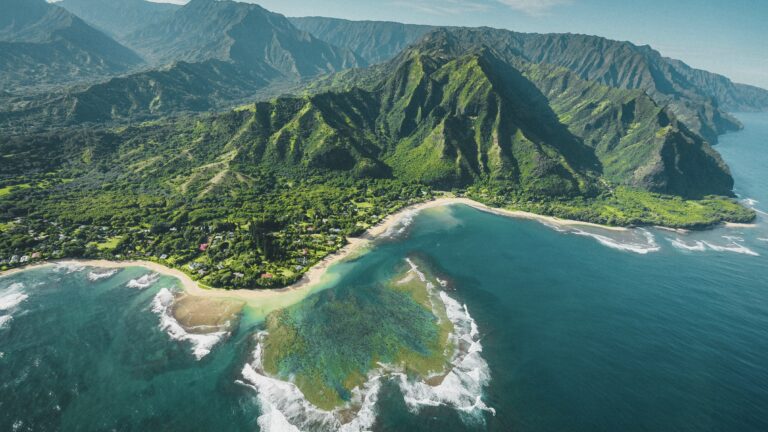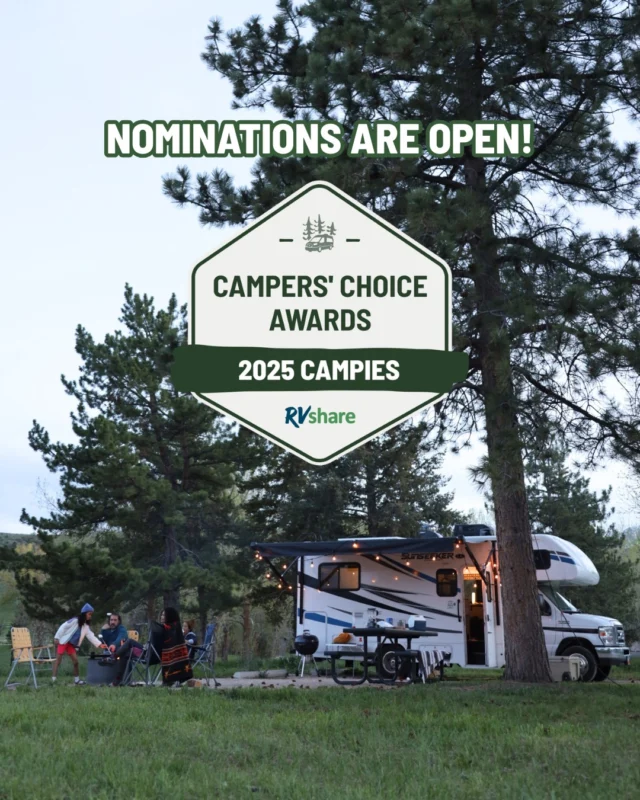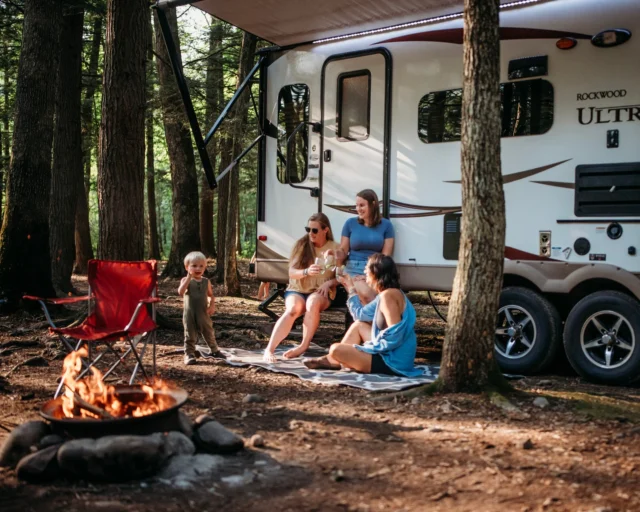
In Hawaii, large RVs are not really available. Instead, you will want to look into a campervan. If you’re lucky enough to be exploring Hawaii in a campervan, you’ll want to experience all the rugged natural beauty that the islands have to offer. Going off the grid is an excellent way to do that as it will help you avoid the more populated, touristy areas.
Whether you’ll be cruising along the West Maui coastline or hiking on Oahu, you should be able to find a great spot for boondocking somewhere nearby.
Note: Make sure to check the local ordinances before setting up camp for the night, as sleeping in a vehicle is illegal in some Hawaii camping spots. In these cases, you can still park your van, but you’ll have to pitch a tent nearby.
Boondocking Sites in Hawaii
Haleakala National Park, Maui
There’s only one van-accessible campground within Haleakala National Park. Kipahulu Campground is located at sea level and offers many hiking and swimming opportunities in addition to gorgeous scenery. Camping is free on a first-come, first-serve basis, but be forewarned that you’ll need to pay a fee to access the park itself. In true boondocking fashion, no hookups are available.
Kiholo State Park Reserve
Traveling to this peaceful camp spot can be a challenge, but if the tires on your van are up for the drive, it’s well worth the trip. With patches of black and white sand, specks of crushed coral and lava rock, and unspoiled panoramic views, this is one of the Big Island’s greatest treasures. If you attempt to swim through the underwater cave in the Queen’s Pond, make sure to do so at low tide—otherwise, you’ll have to hold your breath for a long stretch before you can resurface.
You do need a permit to camp here. There is a fee for the permit and it must be reserved in advance. Campers may only stay on weekends.
Hale o Lono Beach, Molokai
If you can get to the lesser-visited island of Molokai, try parking your rig along the rustic shoreline at Hale o Lono Beach. It’s usually easy enough to find a spot but be forewarned that you’ll have to drive over 7 miles of rough dirt road in order to get there. Also, use caution when visiting in the winter as the high surf makes swimming very dangerous during those months.
Papalaua State Wayside Park, Maui
Close to the bustle of Lahaina Town, you’ll find tranquility at Papalaua State Wayside Park. If you’ve packed a surfboard, you’ll want to bust it out here as the waves are prime. This is also a popular spot for swimming and snorkeling.
Note that a permit is required if you want to stay overnight, and no camping is permitted on Tuesdays and Wednesdays.
Ho’omaluhia Botanical Garden, Oahu
Ho’omaluhia Botanical Garden is a unique spot that first opened in 1982 and features tropical plant life from various regions around the globe. It’s also the only city-run campsite on Oahu that doesn’t have a beachfront location, so it’s quieter than most.
Camping is only available from Fridays through Mondays, so be sure to plan ahead. There’s no fee to stay here, but you will need a camping permit.
Where to Boondock in Hawaii
- Haleakala National Park has one of the best vehicle accessible dry camping options in the state.
- Also, consider visiting the Hawaii Volcanoes National Park, which features two van-accessible campgrounds.
- City, state, and county run parks are also good options, but all require permits and limit the number of days a person can camp.
Boondocking on the Hawaiian Islands can be challenging, but it’s well worth the effort. Because you can’t drive your own RV to Hawaii, consider renting one from RVshare. This is the most carefree option you’ll have when it comes to boondocking in Hawaii.






